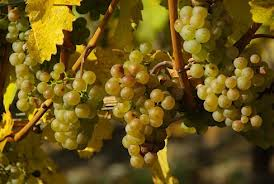The Comparison Yield and some fruit quality traits of Grapevine Cultivars
Keywords:
Performance, Variety, Total Soluble Solid, Phenology StageAbstract
The selection suitable cultivar is one of the factors critical in increasing quality and quantity production of crop. Grapevine is one of the well-adapted crops to the Sistan climate located in South Esat of Iran. In order to comparison yield and some fruit quantity traits of 20 grape cultivars along with local control (Yaghoti Ghermez Zabol) was conducted a experiment on based of randomized complete block design (RCBD) with 3 replications in Agricultural and Natural Resources Research Station of Zahak, during year 2011-2012. Results indicated that the cultivars are different in term yield, total soluble solid (TSS), titratable acidity (TA), and technical maturity index ( TSS/TA). Askari Sefid Shiraz cultivar (18.5 t ha-1) had highest yield. Yaghoti Ghermez Zabol (17.5 t ha-1) and Khalili Varamin (16 t ha-1) had second and third ranks. From aspect, TSS, cultivars of Yaghoti Ghermez Ghazvin, and Varamin (26 %), Yaghoti Siah Shiraz (24 %) and Yaghoti Ghermez Zabol (22 %) had highest Brix degree . Also revealed higher rates from TSS/TA index in cultivars of Yaghti Ghermez Ghazvin, Yaghoti Varamin, Yaghoti Siah Shiraz and Yaghoti Ghermez Zabol with mean 65, 62.60 and 46, respectively. Grapevine cultivars includes, Yaghoti Ghermez (varamin, Ghazvin, Zabol) for earliness and have good production and high quality, accompany with, Askari Sefeid Shiraz and Khalili Varamin are recommendable in Sistan climatic conditions.
References
Almanza, P.J., Quljano-Rico, M.A., Fisher, G., Chaves, B., Balagueralopez, H.E., 2010. Physicochemical characterization of ‘Pinot Noir’ grapevine (Vitis vinifera L.) fruit during its growth and development under high altitude tropical conditions. Agron. Colomb. 28, 173-180.
AOAC., 1990. Official methods of analysis. 15th ed. Association of Official Analytical Chemists, Arlington, VA.
Celik, H.S, Celik, B., Kunter, M., Soylemezoglu, G., Boz, Y., Ozer, C., Atak, A. 2005. Development and production objectives in viticulture. 6th Technical Cong of Turkish Agric Engin Ankara.
Broome, J.,Warner, K. 2008. Agro-environmental partnerships facilitate sustainable wine-grape production and assessment. California Agriculture, 62, 133.
Chanana, Y.R., Gill, M.S. 2008. High quality grapes can be produced in Punjab. Proceedings of the international symposium on grape production and processing. Acta Hort. 785, 85-88.
Childers, N. 1983 Modern fruit science. Hort public. Pp, 411-451.
Gahantighy, H., Ahmadi, A. A. 2005. Evaluate and compare the performance cultivars of grapevines .Final Report of Agriculture research and education organization. Tehran. Iran. PP:1-25
Ghasemi, A. 2000. Comparison of yields of grapevines in the climatic conditions of Esfahan . Book of Abstracts of the National Conference of grapes. Qhasvin. Iran. PP, 21.
Ghosh, S.N., Tarai, R., Pal, P. P. 2008. Performance of eight grape cultivars in laterite soil of west bengal. Proceedings of the International symposium on grape production and processing. Acta Hort. 785, 73-77.
Gowda, V. N., Keshava, S. A., Shyamalamma, S. 2008. Growth, yield and quality of Bangalore Blue grapes as influenced by foliar applied polyfeed and multi-K. Proceedings of the International Symposium on Grape Production and Processing. Acta Hort. (785): 207-211.
Kamiloglu, O. 2011. Influence of some cultural practices on yield, fruit quality and individual anthocyanins of table grape CV. ‘Horozkarasi. J of Animal & Plant Scie, 21(2), pp, 240-245.
Mehmandoost, N., Maskoki, A., Hashemi, N. 2008. Determination of maturity index and harvesting time in various viticulture of grapevine.18th national congress on food technology. Mashhad. Iran. 5-16 october.
Moosazadeh, R., Shoor, M., Mokhtaryan, A. 2012. Study the phenology, morphology and chemical characteristics of some grapevine cultivars in two climatic conditions. J of Small Fruits (in Iranian). 3,55-78.
MSTAT-C, Version 1.41, Crop and Sciences Departmen, Michigan State University, USA.
Mullins, M.G., Bouquet, A., Williams, L.E. 1992. Biol of the grapevine. Cambridge University Press, New York, NY.
Najafi, J., Alipanah, L., Gharayazi, B., Mohammadi, S. A., Hagh Nazari, A.,
This, P. 2006 Genetic diversity of Iranian and some European grapevines revealed by
microsatellite markers. Iran J of Biotech. 4 (1), 36-44.
Nourjou,A., Doulaty Baneh, H., Jemal Ahmad, A. 2011. Grapevine yield ,quality and water use efficiency response to deficit irrigation. ICID 21st International Congress on Irrigation and Drainage. Tehran, Iran. 15-23 October.
Oliveira, M.T., Sousa, T.A. 2009. Organic acids and sugars in musts of irrigated grapevines in northeast Por- tugal. Journal of Wine Research, 20, 1-13.
Pacifico, D., Gaiotti, F., Giusti, M., Tomasi, D., 2013. Performance of interspecific grapevine varieties in north-east Italy. Agri Scie.4 (2), 91-101
Reynier, A. 1995. Manual de viticultura. 5th ed. Ediciones Mundi-Prensa, Madrid.
Valor, O., Sánchez, J. 2003. Brotación, fertilidad de brotes laterales y ubicación del racimo en el cultivar de vid tucupita en condiciones tropicales. Bio Agro 15(3), 201-208.

Published
How to Cite
Issue
Section
Copyright (c) 2014 Hamidreza Reza Fanaei, Hossin Akbarimoghadam, Hossin Rohanienejad, Ali Reza Akbarimoghadam

This work is licensed under a Creative Commons Attribution-NonCommercial-NoDerivatives 4.0 International License.



